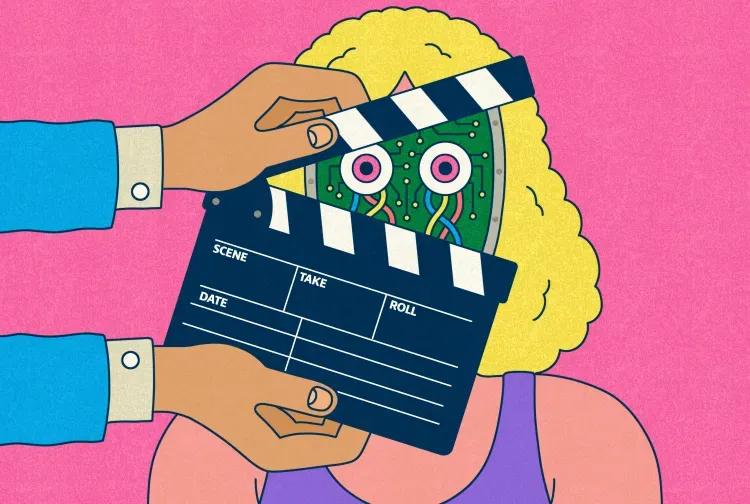Hollywood’s AI Video Revolution Faces a Prompting Problem
As AI-generated video continues to flood the internet, Hollywood finds itself at a major crossroads. From uncanny clips of fake disasters to bizarrely animated animals, generative video content has captivated audiences—even when its quality is questionable. But is this the future of filmmaking, or just a passing tech trend? The rise of AI-generated video in Hollywood is sparking both excitement and concern across the industry. While some see it as a creative tool that will democratize content creation, others fear it could threaten jobs and artistic integrity. Asteria, a new AI-powered production company led by filmmaker Bryn Mooser, is trying to strike a balance—by developing ethical tools that give filmmakers more creative control, not less.
Image : GoogleThe Rise of AI-Generated Video in Hollywood
You’ve likely seen it by now—a social media clip so surreal, it couldn’t possibly be real. AI-generated videos are exploding in popularity thanks to advancements in generative models. From AI-rendered music videos to short films built entirely with prompts, these creations are being hailed as the next wave in digital storytelling. For Hollywood, however, the situation is more complex. The entertainment industry thrives on precision, storytelling nuance, and a human touch that current generative models often lack. Mooser, through his new production house Asteria, argues that the core problem isn’t just the technology—it’s the assumption that generative AI can replace the craft of filmmaking altogether.
The key difference with Asteria’s approach lies in its foundation: ethics and experience. Unlike many AI outfits, Asteria’s core model—developed with research partner Moonvalley—is trained exclusively on licensed content. This could be a game-changer in the wake of major copyright lawsuits like Disney and Universal’s suit against Midjourney. With an “ethical AI” model, Asteria hopes to win over skeptical creators and studios alike by proving that AI-generated video in Hollywood can coexist with intellectual property laws and still push creative boundaries.
Where Creative Control Meets Generative AI
One of the most compelling arguments against using AI in film has been the lack of creative control. As Mooser puts it, you can’t just prompt a model with “make me a new Star Wars” and expect a coherent, quality film. Filmmaking requires control down to the pixel level, and most current tools weren’t designed by people with actual filmmaking experience. To bridge that gap, Asteria is pioneering a unique workflow: using its Marey model to build customized AI tools for each project. For instance, in the animated short “A Love Letter to LA,” the studio trained Marey on 60 original illustrations to build a cohesive aesthetic unique to the project.
This kind of granular control allows directors, VFX artists, and animators to create worlds that still reflect their vision—something generic models simply can’t do. Moreover, Mooser points out that these AI tools can significantly reduce production costs. A film that might normally cost $150 million to make could potentially be produced for $10–20 million, opening doors for indie filmmakers and smaller studios. And with Asteria exploring revenue-sharing models, creators might even gain more ownership over their work than in traditional studio deals.
Challenges, Opportunities, and What’s Next
Despite these promising developments, the rise of AI-generated video in Hollywood still raises critical questions. The technology’s efficiency could mean smaller teams, shorter timelines—and fewer jobs. Asteria pitches this as a positive: with fewer people involved, filmmakers can collaborate more closely with key team members like art directors and VFX leads. But that also means rethinking labor models in an industry still reeling from the 2023 double strike, which was fueled in part by fears around automation.
Mooser is optimistic that skilled workers—from editors to cinematographers—can pivot into new AI-centric roles, much like they did during the transition from analog to digital. But not everyone will make that leap easily. As Asteria pushes ahead with its feature film “Uncanny Valley”—co-written and directed by Natasha Lyonne—Hollywood will be watching closely. The film’s stylized use of generative visuals aims to present AI’s quirks as intentional choices, rather than flaws. If successful, it could mark a turning point in how the industry adopts AI, not as a threat, but as a tool for innovation.
Ultimately, the success of AI-generated video in Hollywood will depend on more than just flashy visuals. It will require clear ethical boundaries, respect for creative labor, and technologies that enhance rather than replace the art of storytelling. Mooser believes Asteria can deliver on that promise—but whether the rest of the industry is ready to follow remains to be seen.


Post a Comment